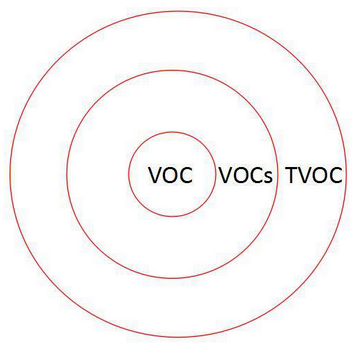What are VOC ? What are VOCs ? What are TVOCs ?
Based on Rainbow's MEMS gas sensor, Rainbow Technology keep on launching new products the VOC sensor module which is used to measure VOCs levels, temperature and humidity.
Ultra low power consumption <1mW;
0-50000 ug/m3 TVOC equivalents;Temp:-40~125 ℃, Humi.:0~100%RH

What are VOC ? What are VOCs ? What are TVOCs ?
Do you know the specific differences?
1. VOC
VOC substances refer to volatile organic substances. VOC is the English abbreviation of Volatile Organic Compound (Volatile Organic Compound). VOC in the general sense refers to volatile organic compounds; but in the environmental sense, it refers to a type of active volatile organic compounds, that is, the type of volatile organic compounds that can cause harm.
In fact, VOC can be divided into two categories:
One type is the definition of VOC in a general sense, which only explains what volatile organic compounds are or under what conditions they are volatile organic compounds;
The other type is defined in the sense of environmental protection, that is to say, the type of volatile organic compounds that are active, that is, the type of volatile organic compounds that can cause harm. It is very obvious that from an environmental protection perspective, volatilization and participation in atmospheric photochemical reactions are very important. It does not pose a hazard if it does not volatilize or participate in atmospheric photochemical reactions.
2. VOCs
In my country, VOCs (Volatile Organic Compounds) refer to organic compounds with a saturated vapor pressure greater than 70 Pa at normal temperature and a boiling point below 260°C at normal pressure, or with a vapor pressure greater than or equal to 10 Pa at 20°C. All organic compounds of corresponding volatility.
From the perspective of environmental monitoring, it refers to the general term for non-methane total hydrocarbons detected by hydrogen flame ionization detectors, mainly including alkanes, aromatic hydrocarbons, olefins, halogenated hydrocarbons, esters, aldehydes, Ketones and other organic compounds. The important thing to note here is that VOC and VOCs are actually the same type of substance, that is, the English abbreviation of Volatile Organic Compounds. Since volatile organic compounds generally have more than one component, VOCS is more accurate.
3. TVOC
Indoor air quality researchers usually refer to all indoor organic gaseous substances they sample and analyze as TVOC, which is the abbreviation of the first letter of the four words Total Volatile Organic Compounds. Various measured VOCs are collectively called total volatile organic compounds. TVOC. TVOC is the most serious of the three types of pollution that affects indoor air quality.
The World Health Organization (WHO, 1989) defines total volatile organic compounds (TVOC) as a general term for volatile organic compounds with a melting point below room temperature and a boiling point between 50 and 260°C. It exists in the air in the form of evaporation at normal temperature. Its toxicity, irritation, carcinogenicity and special odor will affect the skin and mucous membranes and cause acute damage to the human body.
To sum up, the relationship between the three can be expressed by the inclusion relationship:




